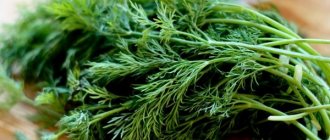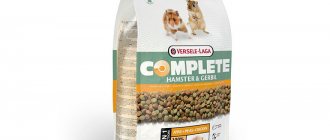Rabbits eat plant foods. They have a relatively large single-chamber stomach. Therefore, they need adequate feeding according to generally accepted standards. However, before compiling a diet, you should familiarize yourself with some of the physiological characteristics of animals.
This article describes the main features of feeding rabbits: a description of food products, examples of diets and food that should never be given to animals.
- Greens
- Diet structure and feeding norms
How to feed rabbits correctly?
Calculating the diet requires taking into account the age characteristics, weight category and general condition of the pets. These three factors determine the daily feed amount for each rabbit.
Many people who started raising animals for the first time do not know what to feed their rabbits at home. All food for rabbits can be divided into several categories:
- Food of plant origin: beets, carrots, corn silage, turnips.
- Coarse feed: coniferous and deciduous branches, stem parts of grain crops, hay.
- Green food: field and meadow herbs (alfalfa, dandelion, nettle).
- Concentrates: corn grains, whole and crushed oats, husks of ground cereals, cake.
- Animal feed: whey, curdled milk, crushed bones.
- Food leftovers: stale baked goods, leftover soup and porridge, vegetable and fruit peels.
- Vitamin and mineral supplements: table salt, chalk.
Conditionally permitted types of feed
Some products can be given to eared pets on a limited basis, offering an alternative in the form of proven food.
Vegetables
Feed with caution to animals:
- cucumbers and red beets for their laxative effect;
- turnips, radishes;
- sweet pepper fruits.
Fruits
Juicy fruits and berries are given to pets in small quantities so as not to cause diarrhea. You can give watermelon, melon, strawberries, raspberries, currants, bananas (pulp).
Cereals
Give rye to rabbits with caution. Cereal increases acidity and causes the formation of gases. The share of rye in the feed mixture should not exceed 5%.
Legumes
Peas, lentils, beans are nutritious and easily digestible foods. But for the gentle digestion of animals, this grain is given carefully:
- peas are given only in crushed or pre-soaked form;
- boil red beans, drain the broth;
- Rabbits are reluctant to eat Russian beans due to their large size and hardness.
Compound feed
In the absence of specialized rabbit compound feed, it is allowed to use pork compound feed for fattening animals . Bird mixtures are not given to animals due to the high content of gravel and shell rock in the product. Cow feed contains a lot of salt, so it is also not suitable for feeding rabbits.
Berries
Stone fruits (cherries, sweet cherries, plums, apricots) are given to animals with caution, removing the pit. The nucleolus contains toxic substances that are deadly to animals.
What should you not feed rabbits?
The small stomach with underdeveloped muscles of furry pets imposes its own restrictions on the way they eat. Animals cannot go long without food and water: incoming food pushes through the previous portion of food, thereby starting the digestion process. In addition, sour, salty, and sweet foods are strictly prohibited.
Attention! At home, rabbits should not be fed freshly cut grass: it causes intestinal bloating. It needs to dry under the sun for several hours. When feeding root vegetables, they must first be thoroughly cleaned of contaminants.
Some plants can cause significant harm to the body of bred pets:
- Buttercup - causes diarrhea, poisoning and bloating.
- A lumbago paralyzes the body.
- Aconite - profuse salivation begins, the body is seized by convulsions, and a slowing of the pulse is observed.
- Marigold marigold - disrupts the functioning of the kidneys.
See also Bread in the diet of rabbits: norms, feeding rules, precautions
Some plants contain toxins and can be fatal. Such toxic plants include dope, spurge, mustard, and foxglove.
What to feed rabbits in winter?
Feeding rabbits in winter is especially important because the food they eat helps keep the animal warm. Feeding a rabbit in winter at home should follow a diet that must include concentrates, coarse feed, root vegetables, and silage. Feeding standards for rabbits depend on the category of the animal.
Males and females for slaughter:
- 0.15 kg of roughage;
- 0.5 kg of root vegetables;
- 0.1 kg of concentrates.
Resting pairs of females and males:
- 0.15 kg of roughage;
- 0.15 kg of root vegetables;
- 0.05 kg of concentrates.
Males during mating period:
- 0.15 kg of roughage;
- 0.2 kg of root vegetables;
- 0.05 kg of concentrates.
Bunny rabbit:
- 0.18 kg roughage;
- 0.2 kg of root vegetables;
- 0.06 kg of concentrates.
Young pregnant rabbit:
- 0.25 kg of roughage;
- 0.3 kg of root vegetables;
- 0.07 kg of concentrates.
Nursing rabbit in the first month after giving birth:
- 0.2 kg of roughage;
- 0.4 kg of root vegetables;
- 0.09 kg of concentrates.
One-month and two-month-old rabbits:
- 0.05 kg of roughage;
- 0.15 kg of root vegetables;
- 0.05 kg of concentrates.
Three-month and four-month:
- 0.1 kg of roughage;
- 0.3 kg of root vegetables;
- 0.05 kg of concentrates.
Five-month, six-month and seven-month:
- 0.15 kg of roughage;
- 0.35 kg of root vegetables;
- 0.08 kg of concentrates.
Vitamin and Mineral Supplements for Fast Growth
In winter and early spring, feed partially loses its vitamin value, as a result of which the number of empty females increases, fertility decreases, signs of rickets appear in young animals, and the safety of livestock decreases.
The diet is enriched with the following vitamin supplements (grams/head):
- Fish oil: for adults at rest – 1, for pregnant uteruses – 2, for suckling uteruses – 3.
- Baker's yeast - 2-3.
- Sprouted grain – 10-20.
- Vitamin E concentrate – 1-2.
Egg shells are burned, ground and sprinkled on silage or fruits (adults will need 2-4 g per head, and young animals - 1 g).
For the queen and her offspring, food is mixed with salt, chalk, bone meal and wheat bran 2 times a week.
Rabbits are given vitamin B₁₂ in the amount of 1–2 mg per kg of body weight.
What to feed rabbits in summer?
Feeding any rabbit at home during the winter is difficult compared to the summer days. In summer, the best food for rabbits is green food. But grasses contain an excessive amount of moisture, so the diet should be diluted with a small hay or straw. Fresh grass consumed in large quantities causes diarrhea and bloating. If grasses are replaced with silage, then the addition of dry feed is mandatory.
See also: Are rabbits given celandine? Why is this grass dangerous for rabbits?
Use of veterinary drugs
Both for those who are learning for the first time what to feed a domestic rabbit, and for experienced rabbit breeders, it is useful to know that:
- Timely prevention of coccidiosis helps prevent the development of inflammation and destruction of the intestinal mucosa, which helps to avoid growth retardation in young animals.
- The use of the drug “vetom” improves the functioning of the digestive system and improves immunity.
- To improve the ratio of calcium and phosphorus, stimulate metabolic processes and improve liver function, “catozal” is used. It can be used either in injection form (which is more effective) or given orally (with water or food).
- To increase weight gain, significantly improve the quality of skin and coat, for show animals, the use of the drug “nucleopeptide” is very effective.
A high-quality and balanced diet is the basis for the health of the animal, as well as the peace and well-being of its owner.
What to feed rabbits in spring?
In the spring, animals develop a strange feature - they begin to eat their own feces. This situation indicates a lack of B vitamins, which can be replenished by including new grass in the diet.
Attention! The grass must be collected in an area far from the road: young plants absorb a significant amount of harmful substances.
Animals trying fresh greens for the first time after a long winter indiscriminately eat all the grass, so they can be poisoned by poisonous plants. They should be excluded immediately: even when dried, their toxic properties remain.
The best nutritious food for rabbits is young grass; it must be diluted with hay, which is best laid at night. This combination will help avoid diarrhea.
Including raw root vegetables in the diet allows you to strengthen the immunity of animals after a long winter: vegetables are rich in carbohydrates and water. Animals' favorite treat is carrots; they contain a large amount of vitamin A. It is best given raw. Many people have a large harvest of potatoes left in their cellar in the spring; when boiled, they are well suited as feed, as they are rich in starch.
Your pet will not refuse cabbage, which contains many microelements. Regular eating of cabbage leads to the formation of a thick undercoat. Sugar beets should initially be given in small quantities: they can negatively affect the digestive system.
Willow and birch brooms prepared for the bath are well suited for spring feeding. It is useful to feed animals with pine branches, previously steamed with wheat bran.
In addition to young greenery, tree shoots and leaves are suitable as food for rabbits. Including green feed in the diet allows you to reduce the consumption of grain crops twice.
What to feed the rabbit?
A nursing rabbit should have a rich diet and constant access to clean water. Then the milk produced per day will contain a rich vitamin complex and protein. Two-week-old animals are fed exclusively with mother's milk.
A varied diet includes the inclusion of protein foods:
- peas;
- beans;
- soft corn kernels;
- a mixture of crushed wheat and chopped vegetables.
The first three ingredients should be pre-soaked for several days.
Juicy foods will help strengthen the body after childbirth: carrots, beets, fresh herbs. It is recommended to change the water several times a day: during lactation, the rabbit loses a lot of fluid. Water consumption increases by 2-3 times.
See also Allowed and prohibited types of food for rabbits
In the summer, feeding a rabbit will not be a problem: young greens, root vegetables, cabbage leaves, alfalfa, meadow and field plants, and vegetable tops can be found in every household.
In winter, green food is replaced with:
- boiled potatoes;
- hay;
- roots;
- cake;
- bran.
Nutrition rules for breeding eared animals
Depending on the physiological state of the animals, both the composition of the diet and its quantity change.
At different periods of the animal’s life cycle, the rabbit breeder must provide and organize feeding that corresponds to the physiological phase.
Tables with the relevant standards are described above.
Feeding in summer
Feeding in winter
Diet during preparation for mating
As mentioned above, animal feeding during such a crucial period must be increased. It is advisable to provide them with succulent feed/hay/concentrates - 150-200/150-200/90-100, respectively (in grams).
Feeding pregnant and lactating rabbits
Feeding a pregnant or lactating rabbit requires an even greater increase in the number of servings. Portions of succulent food are increased to 200-250 g, the same amount of hay is left, and the dose of concentrates is reduced to 70-90 g.
Diet with dairy products
Born and growing rabbits get milk from their mother. If a female rabbit dies for some reason, the rabbit breeder must select the optimal milk formula to feed the orphans.
The following are used as a rabbit milk substitute:
- goat or cow's milk;
- factory-produced milk formula for rabbits or kittens.
It is most convenient to feed babies with a pacifier, a large syringe or pipette, or a special feeding device from a pet store.
Milk as such is even harmful to adult animals. Firstly, the animal does not feel the need for this. Secondly, adults, like humans, are not able to digest lactose and milk protein.
Features and rules of feeding young rabbits
The life of a little rabbit consists of four stages, during which its nutritional needs gradually change.
- From birth until two weeks of age, baby rabbits need mother's milk;
- In the period from 2 to 3 weeks, a couple of times a week, the baby rabbits can be fed with dry mixtures from dried grass;
- A month-old animal is already able to eat more solid food. Although 20% of the diet should still be milk. The remaining 80% is all kinds of mash, grass, hay;
- Two-month-olds are separated from their mother and offered dry food, bran, hay, grass, and some vegetables.
What to feed one month old rabbits?
A one-month-old rabbit is accustomed to hay and feed. Until this age is reached, the animal is fed on mother's milk. At one and a half months old, young animals are not limited to hay or mixed feed. From three months, vegetables are introduced into the diet in small quantities.
Attention! Vegetables are introduced into the diet of rabbits at intervals of several days. This allows you to track the reaction of young animals to each product.
Feeding young rabbits should be done in accordance with certain rules:
Newborn rabbits should have full access to a drinking bowl with clean water: a lack of fluid leads to poor digestion of food, loss of appetite, and deterioration of the condition. In the autumn, excessive consumption of succulent food leads to digestive system upset.
Features of fattening
When breeding for meat, the necessary adjustments are made 30 days before slaughter. This time is divided into three phases, 10 days each:
- Preparatory.
- Home.
- Final.
Preparatory phase
In order for pets to gain weight, the volume of roughage is reduced and the amount of concentrates is increased. Since rabbits actively feed in the evening and morning (in poor lighting), the windows in the room need to be darkened.
What is the best way to feed rabbits at this time: good hay, forbs and grasses of the legume family, corn and barley grain, wheat bran, cake, cabbage, carrots.
Main phase
Feeding is aimed at fat deposition. They give corn and peas, boiled potatoes and bran (the rest of the vegetables are removed, instead of bran you can give compound feed), they give a little hay, and include a variety of greens in the diet.
Final phase
The main task is to support appetite and continue weight gain. Taste stimulants are introduced: dill herb, basil, caraway and others. Hay is removed (can be given only in case of indigestion) and succulent food.
They give potatoes with mixed feed or bran, cereal-legume mixtures of herbs, summer twig food, grains, dill or caraway seeds. You can add rutabaga or soy.
When animals become lethargic, inactive and begin to lose appetite, fattening is over.
It is important to know that industrial breeding without using a sufficient amount (up to 60%) of concentrates is very problematic. And if there are enough of them, fattening can be completed once the animals reach three months of age.
How many times a day should rabbits be fed in winter and summer?
Rabbits are fed three times a day. This takes into account daylight hours, so in winter feeding is carried out at 8 am, 12 noon and 5 pm. In the summer, the first feeding is practiced early - 6 am, the second - at 3 pm, the third - at 7 pm.
Proper feeding of a rabbit at home requires taking into account the age, season, weight, category of the animal (nursing or pregnant rabbit, male for mating or on vacation, animals for slaughter). Feeding a rabbit in winter at home is carried out with the obligatory inclusion of root vegetables, roughage, and concentrates. Newborn rabbits should be fed exclusively with mother's milk.
Diet planning and feeding regimen
When preparing a diet, it is important to take into account the age, breed and health status of the animal. It is convenient to calculate the feeding rate for rabbits in feed units, for example, taking one unit as 1 g of oats. So, a list of norms in the number of units for medium-sized rabbits:
- animals not intended for reproduction 110-170;
- in preparation for mating 170-210;
- pregnant female 200-240;
- lactating female in the first 2 weeks after giving birth 260-320;
- lactating female with monthly rabbits 430-500;
- lactating female after a month after giving birth 550-700;
- rabbits up to 3 months 100-150.
On average, the amount of roughage should be 50-60% of the total rabbit nutrition, 40% is allocated for succulent and green food. It is important to understand that for decorative breed rabbits, a smaller amount of food will be sufficient than for their larger counterparts.
If rabbits are kept for meat, they should be given more high-calorie foods such as oats, wheat, mixed feed, and hay and fresh grass should be excluded from their diet. For overweight animals, you can replace part of the feed with hay or succulent feed, but in no case should you simply reduce its amount. Long-haired breeds of rabbits sometimes need to add flax seed to their food, as it has a beneficial effect on the quality of the wool.
In addition to food, there must be fresh water in the cage. You need to make sure that no droppings, hay or leftover food gets into the drinking bowl and change the water on time. If possible, it is better to make a drinking bowl for rabbits in drip form. Firstly, this will prevent the ingress of food and spoilage of water, and secondly, the animals will not be able to turn it over.











